Service design training for mumok
Helping a museum team design better services
For mumok, I helped the art education team explore service design methods through hands-on learning to shape better visitor experiences on-site and online.
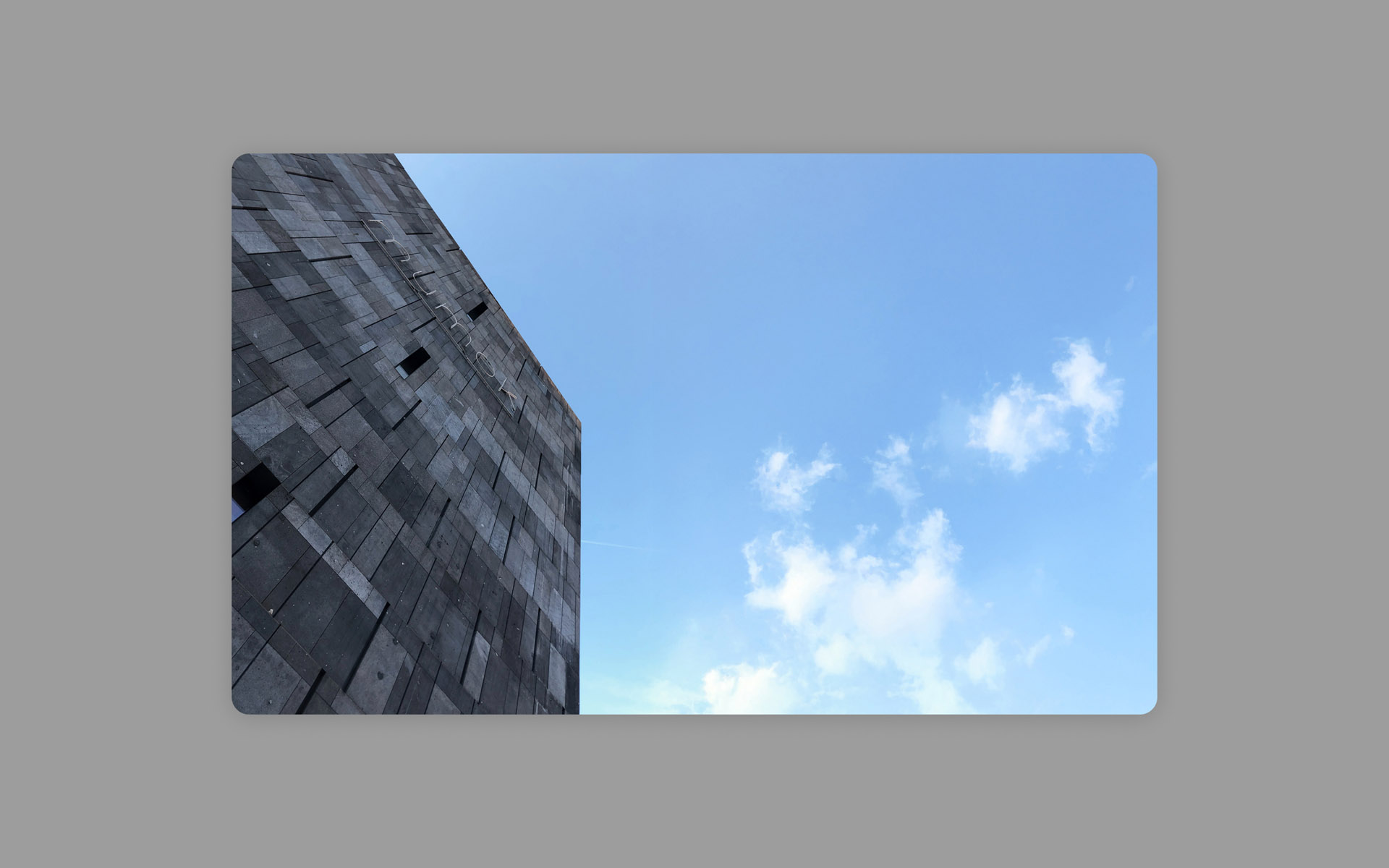
Facts
Client
mumok – Museum of Modern Art, Ludwig Foundation, Vienna
Project
Internal training sessions as part of “mumok digital”
Format
2 live webinars
2 in-person workshops
Team
Claudia Freiberger
Marie-Therese Hochwartner
Emanuel Jochum
My role
Workshop design & facilitation
Service design method coaching
Prototype support
Period
2021
Sector
Art education, professional training
Challenge
As part of its “mumok digital” project, the museum’s education team wanted to build new skills for designing visitor services in a more structured, human-centred way. The team was already strong in public programming and engagement, but service design was a new field for many.
The goal was to make these ideas real and practical, connecting them to the team’s day-to-day work and giving them tools to plan, test, and improve new digital or hybrid services. We grounded the training in actual visitor survey data, making it easy to link insights to real opportunities like a Matterport-based digital tour.
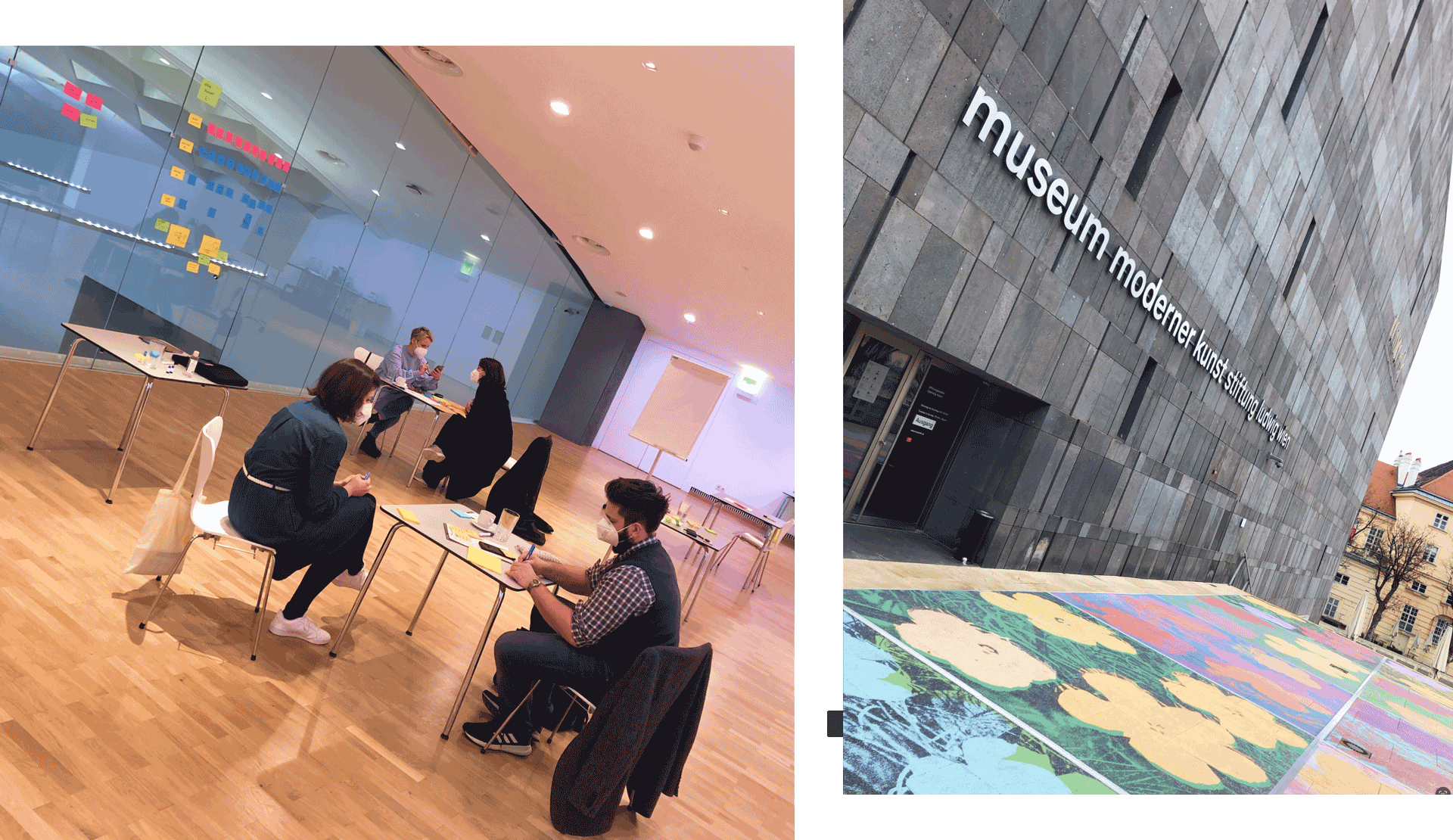
One photo shows the workshop setting (under Covid measures), while the other sets the scene with mumok’s colourful entrance in Vienna.
Approach
To balance theory and practice, we combined two live webinars with two in-person workshops.
The first webinar introduced the basics of design thinking – empathy, iteration, and testing – with examples relevant to museums. The second session focused on service design and ideation, showing how to connect user insights to practical ideas and quick concept sketches.
The workshops made the methods real. On day 1, we used survey data to map visitor journeys, identify friction points, and build empathy maps. On day 2, we moved into service blueprinting and simple prototyping. The team developed early ideas for new services, mapped them out in blueprints, and tested rough prototypes together.
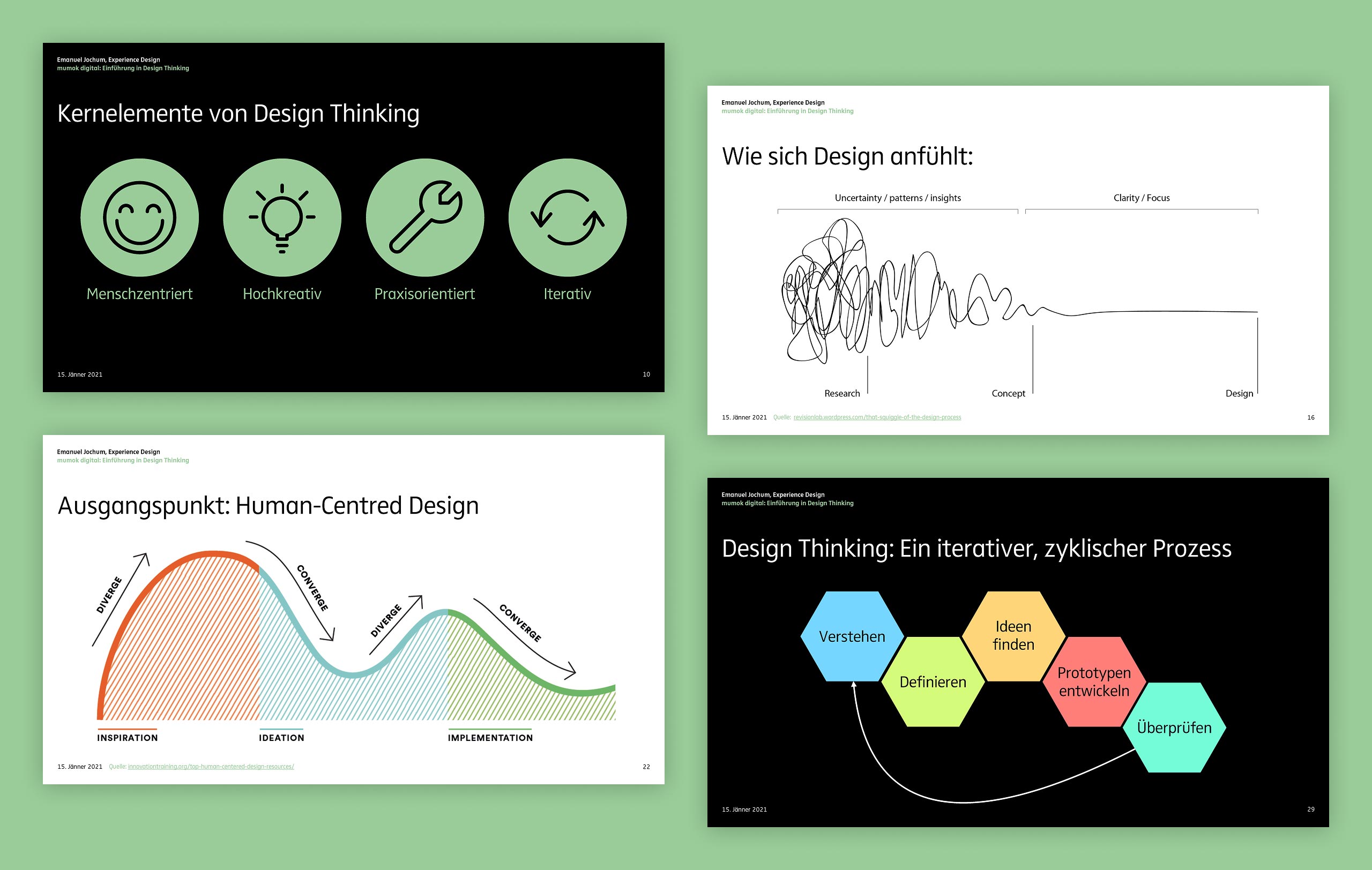
The first webinar introduced the team to design thinking principles and practical ways to bring a design mindset into their museum work.
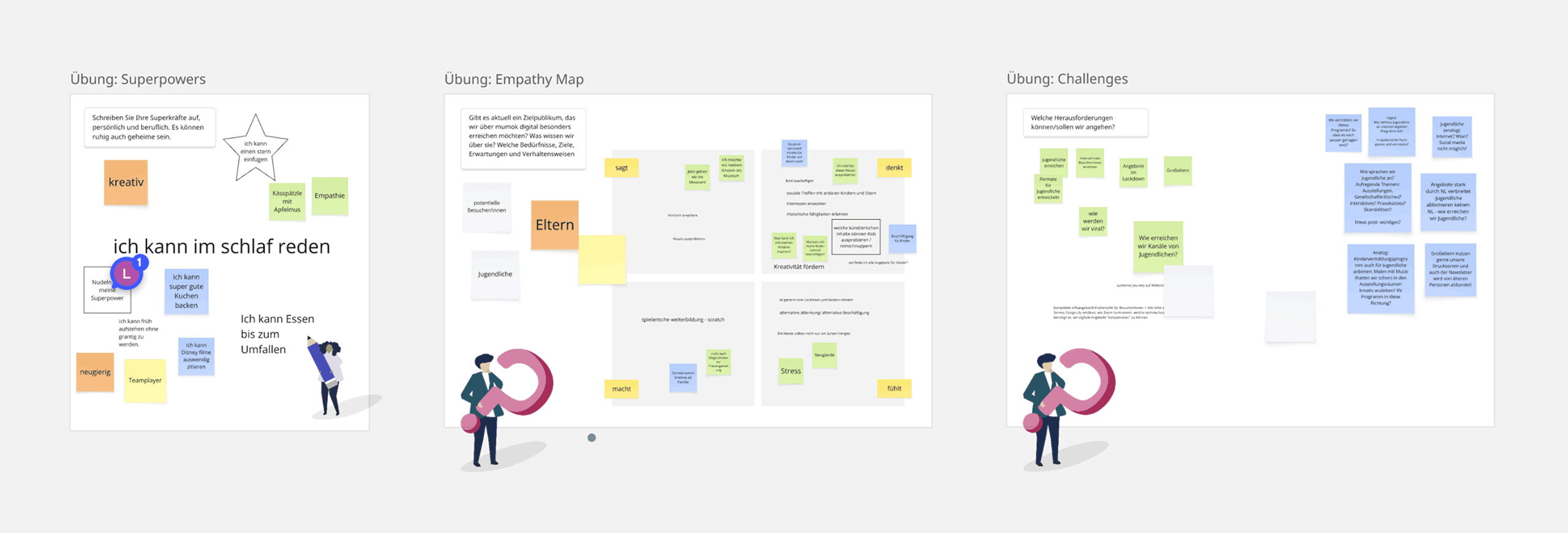
Participants shared their “Superpowers,” mapped what they knew about their audience, and defined real challenges worth solving together.
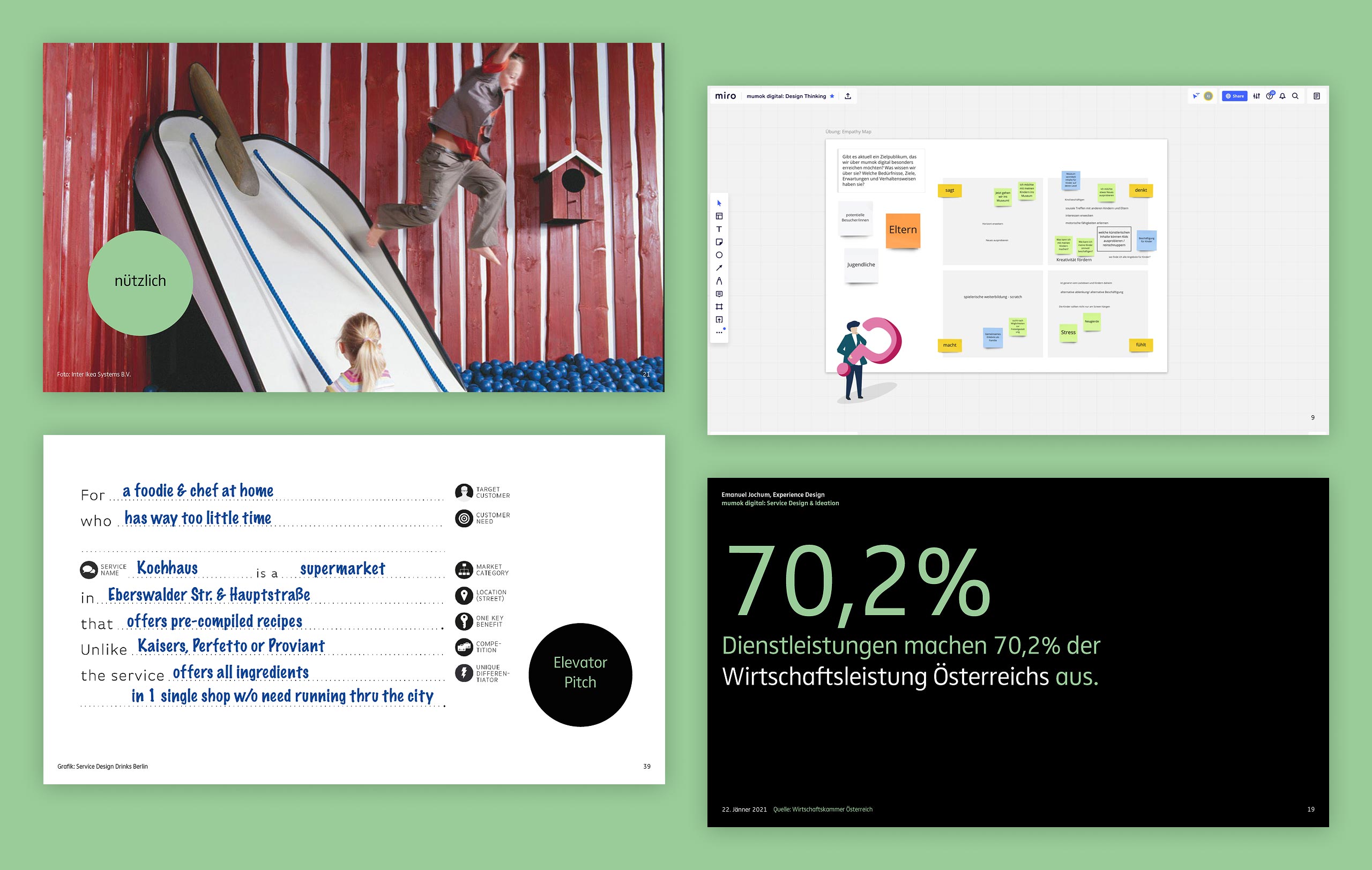
The second webinar highlighted how service design methods can help connect audience insights with new ideas for museum services.
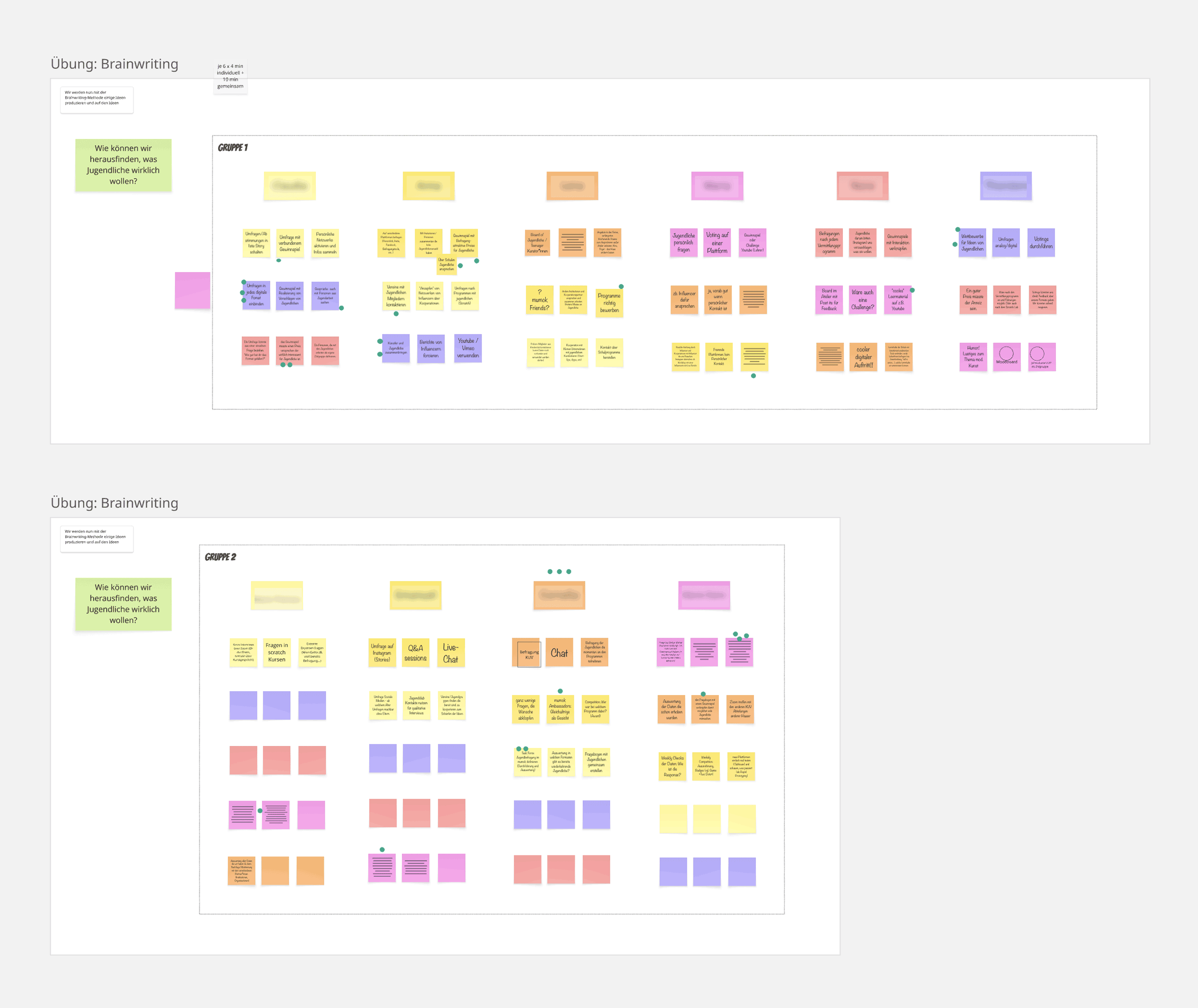
The team used the Brainwriting method to spark ideas quickly and build on each other’s thoughts without overthinking.
Some questions that shaped the work

How can a team new to service design feel confident using these tools?
We made the sessions simple and practical, with clear steps and examples drawn from real museum work. By combining short theory blocks with hands-on mapping and prototyping, the team saw how the tools fit naturally into their daily practice. This helped reduce hesitation and made trying new methods feel realistic, not intimidating.

How do you turn survey data into ideas people can act on?
We translated the survey findings into visitor journeys and empathy maps the team could discuss and adapt. This helped everyone see how raw data connects to everyday moments in the museum. Mapping made it easier to spot small gaps and spark concrete ideas for new or improved services.

How do you build trust in small experiments inside a big institution?
We focused on creating a safe space where trying new methods felt realistic and supportive. The workshops helped the team bring their different experiences and expertise to the table – from visitor knowledge to education practice – and connect these strengths in new ways. By reflecting together, they built trust in the idea that small steps can lead to meaningful change.
Result
The team now has a shared language for thinking about services from the visitor’s point of view. They’ve seen how mapping journeys and using empathy maps can make hidden gaps clearer and spark ideas for new experiences.
The workshops gave them practical tools and a real test run, working through blueprints and rough prototypes that can grow into real projects as part of “mumok digital”. These outputs now serve as a foundation for planning digital tours or hybrid offers.
Maybe most importantly, the team discovered how open reflection and testing can bring new energy to how they work together, showing that good ideas don’t have to be perfect to move forward.
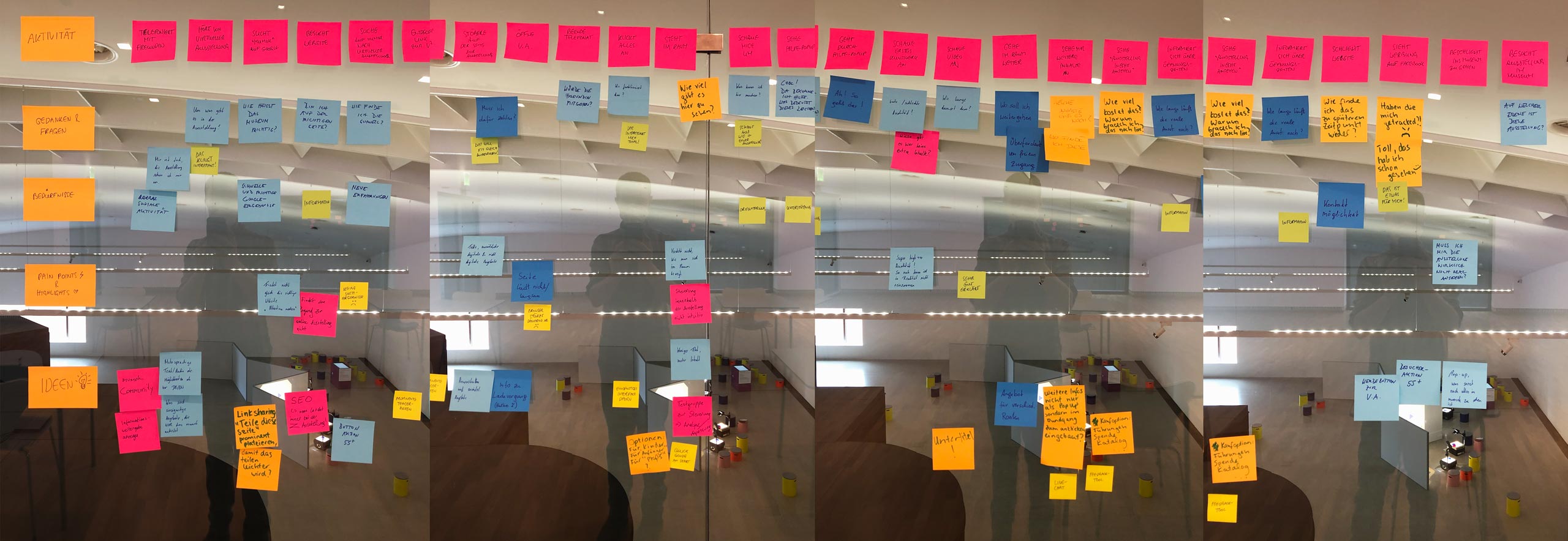
A journey map captured the full visitor experience, connecting real survey insights with clear opportunities for improving services.
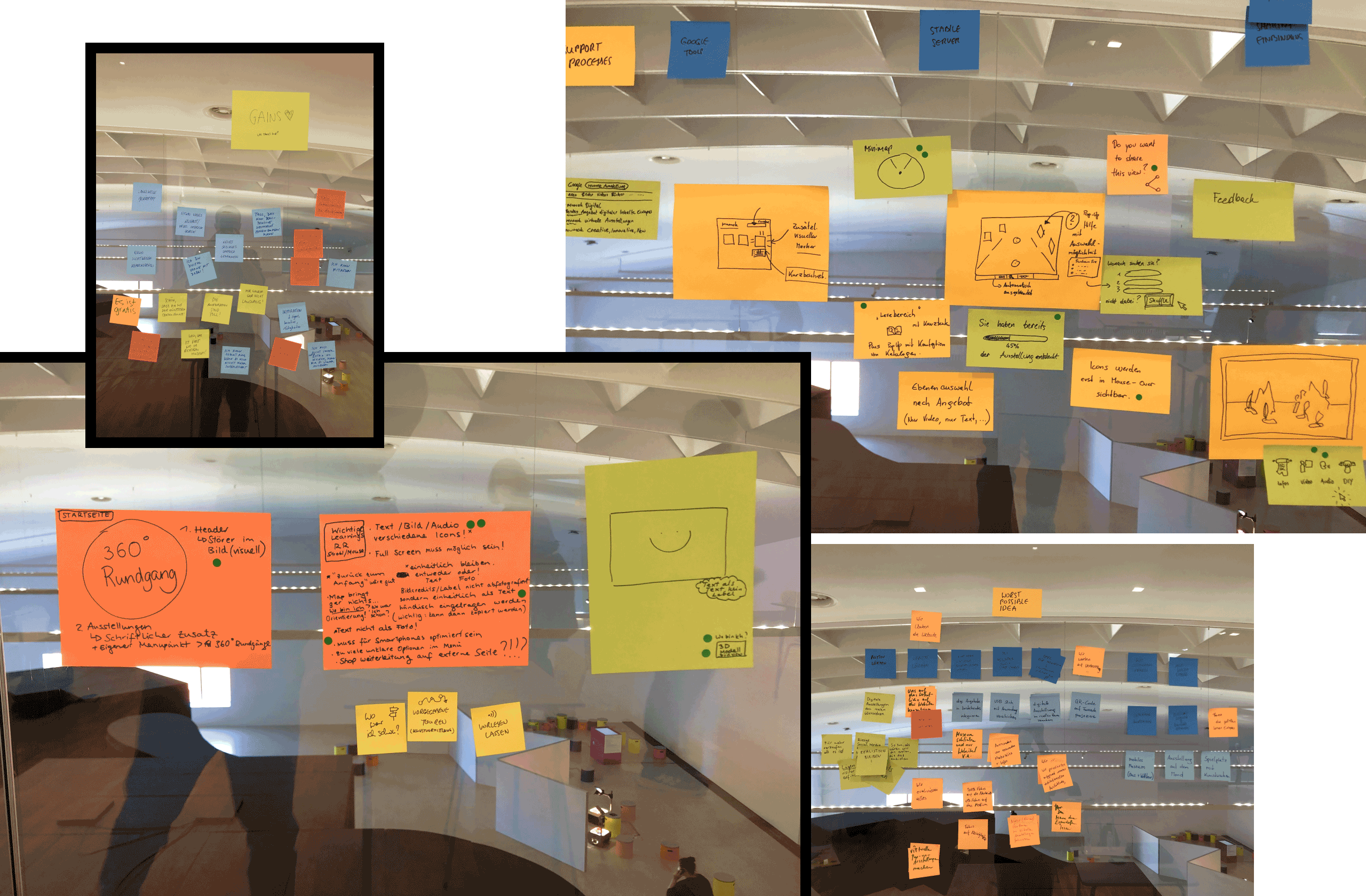
During the workshops, the team mapped gains, explored rough ideas like the Worst Possible Idea, and sketched quick prototypes on sticky notes.
What I contributed
Design and hosting of the two webinars and workshop days
Facilitation of group activities, breakout work, and coaching
Integration of the visitor survey findings to ground all exercises in real audience needs
Creation of materials for documentation and next steps
Worth a mention
Good service design is really about staying curious together. When people reflect openly, map what visitors truly need, and test ideas early, even a big institution can find simple ways to make the experience more human and personal.
Planning better experiences but not sure where to start?
Let’s break down the complexity and shape ideas together, so your visitors or customers feel welcome and your team feels ready to create great services.
Let’s make something meaningful.
Emanuel Jochum, Experience Design
Rotenturmstraße 27/2, 1010 Vienna, Austria
+43 699 17191982, hello@ejochum.com
© Emanuel Jochum, 2025
Simple is beautiful